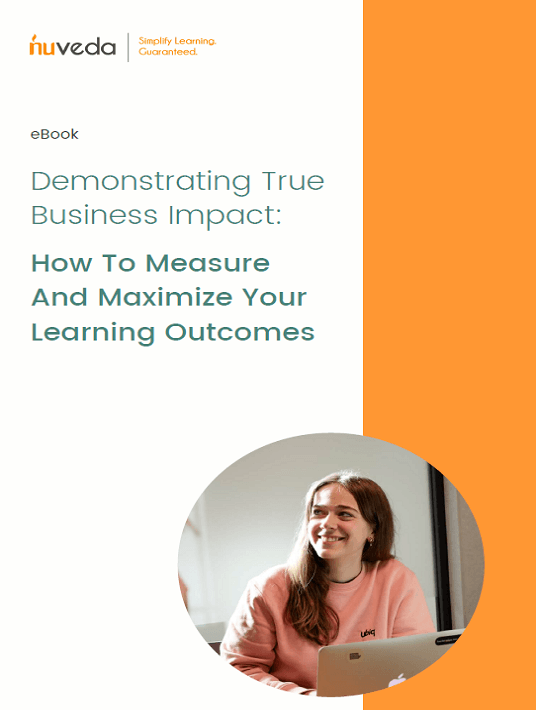Useful Metrics To Gauge Learning Outcomes
It is seldom that learners understand that their learning programs can actually affect their work in terms of actual learning outcomes. But for Learning & Development practitioners and Professional Training Companies, it is imperative. It is not only a question of what the metrics are but how the metrics relate to the learner’s work. Making that connection isn’t always easy, and that is why the choice of metrics is very important.

1. Revenue Metrics
A sales representative or an Account Manager who takes part in a Sales Enablement Program can easily relate to metrics such as a % increase in revenue. However, someone in a sales process may not be able to directly relate to such a metric. How do we handle such a situation? Here are some ideas that can help you create these metrics.
Consider the concept of unit metrics—i.e., can a person who is processing contracts for example, provide data on the % increase in the number of contracts processed per month? Other unit metrics could also include the number of units sold per month, the number of unsold units (for example on a flight, the number of unsold seats per flight constitutes a loss of revenue for the airline).
Of course, there are any number of sales metrics that can be collected with regards to lead generation, such as % increase in marketing qualified leads or % increase in sales qualified leads; % increase in sales conversions on a weekly basis, etc.
The list of sales metrics is endless, but if you are able to create a line of sight to revenue, you may be able to create metrics that are relevant to your participants and those that can impact revenue. In general, however, if participants are able to relate to a metric that eventually leads to a % increase in sales (growth) or % leakage in sales (loss), then you’re likely to get valuable data around your learning program impacting revenue.
2. Cost Reduction Metrics
Most successful businesses are good about getting a handle on costs and controlling them—but it is not often that the learning programs that participants undertake get credit for the reduction.
Cost metrics such as % increase/decrease in direct or indirect costs, % increase/decrease in unit costs (for example, the price of making a product or service went up or down because of increase or decrease in fuel costs) and % increase/decrease in service costs tend to be the easy metrics that may directly come from a system or otherwise. There are other metrics that tend to be trickier—such as increased/decreased costs of carrying inventory or increased costs due to time delays. In such cases, it is easier to capture two metrics instead of one—for example, % increase in inventory over a fixed time period and the costs of that increase.
In modern-day SaaS companies, it is important to capture costs of poor quality, such as a % increase in defects over a specific time period, and unit costs of resolution of defects. There are many more metrics around quality and information security—all of which may be wrapped around defects and costs of resolving those issues.
3. Productivity Metrics
Simply said, more productivity means that more work gets done in a shorter time period. For businesses, this is a very important metric as it measures the efficiency of the business. For example, in a call center business, the metric could be “Number of calls handled per month per employee.” If the number goes up consistently, then it is a very good indicator that the call center is getting more productive.
In a manufacturing setting, productivity metrics could include “Number of units/products produced per month”, whereas, in a SaaS company, these metrics could be “Number of new features added monthly.” In a sales context, one can measure the “Sales Qualified leads generated per representative per month” as an indicator of productivity, while in a customer support role a relevant metric could be the “Number of support tickets handled per person per month.”
The guiding principle, however, is to measure units of output (product or service) per person or division or a specific entity over a regular time period.
4. Customer Satisfaction Metrics
Customer satisfaction metrics are relatively simple to measure and tend to be the same across all industries. Customer satisfaction is typically measured by a survey to a simple question: “How satisfied are you with the product/services offered by the company?”
A more important metric is of course the NPS (Net Promoter Score) metric, first pioneered by Fred Reichfeld in 2003 at Bain and Company. This measures the customer’s likelihood to refer the company to others, and measures responses to a single question: “How likely are you to recommend this product or service to others?” and it is measured on a scale of 1–10. Scores 1–6 are considered as detractors, 7–8 are considered as passive, and scores 9–10 are considered as promoters.
NPS = %Promoters - %Detractors
In general, an NPS score greater than 50 can be considered good, greater than 70 very, very good (i.e., your customers love you). An NPS score of 100 is aspirational and next to impossible for most organizations.
5. The Balanced Scorecard
The Balanced Scorecard, first suggested by David Norton and Robert Kaplan in 1992, measures all four key business metrics as indicated above: Revenue, Cost Reduction, Productivity and Customer Satisfaction. However, it is not so straightforward for participants to directly understand their connection to these important metrics of the business, unless they are in jobs that can directly impact the Balanced Scorecard.
The CALF™ platform is unique in the sense that it allows you to capture all of these metrics because the Kirkpatrick Model of Learning Measurement is embedded in it. From user-defined Program Metrics (akin to the metrics mentioned in sections 1-4 of this article) to the Balanced Scorecard, clients use the CALF™ platform to successfully demonstrate the business impact of their learning initiatives.
Conclusion
While it may be difficult to know what to measure, the Balanced Scorecard framework and the underlying metrics that constitute the Balanced Scorecard allow you to identify metrics that are relevant to any business. Keeping the metrics simple and relevant to the learner is key to capturing a meaningful learning outcome.
Download the eBook Demonstrating True Business Impact: How To Measure And Maximize Your Learning Outcomes to drive L&D initiatives in the right direction and achieve your desired business outcomes. You can also join the webinar to learn whether your L&D initiatives really align with the organizational objectives. The webinar also explores how to leverage the full capabilities of CALF™️, the learning platform that measures the behavioral and business impact of your learning interventions.










